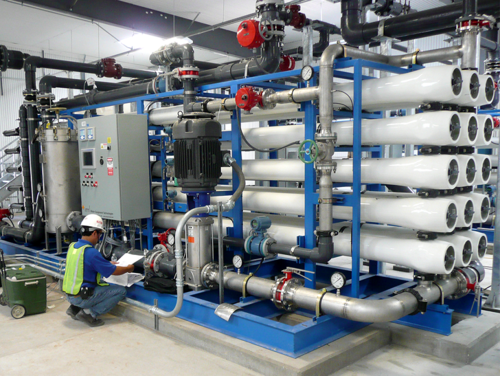Cutting-edge PFAS Treatment Solutions for Safer Water
The increasing prevalence of PFAS contamination in water products demands an essential evaluation of cutting-edge treatment options. In addition, emerging bioremediation strategies offer an even more sustainable strategy to taking on PFAS difficulties. pfas management.
Overview of PFAS Contamination
PFAS contamination has actually become a substantial ecological and public health issue. Per- and polyfluoroalkyl substances (PFAS) are a team of synthetic chemicals known for their perseverance in the atmosphere and human body, leading them to be typically referred to as "forever chemicals." These substances have actually been widely utilized in different markets, including firefighting foams, water-repellent materials, and food packaging, mostly as a result of their water- and grease-resistant residential or commercial properties.
The widespread usage of PFAS has actually caused their discovery in soil, water products, and also in the blood of humans and animals. Studies have actually connected PFAS exposure to countless health and wellness issues, consisting of developing effects in infants, immune system dysfunction, and different kinds of cancer. Furthermore, the environmental determination of these compounds complicates their deterioration and removal, raising issues about lasting ecological effects.
Governing bodies are progressively applying stringent guidelines to keep an eye on and lower PFAS levels in alcohol consumption water and various other environmental tools. As awareness of PFAS contamination expands, it has come to be important for areas and markets to seek efficient treatment options to reduce direct exposure and safeguard public wellness.
Advanced Filtration Technologies
As the necessity to deal with PFAS contamination intensifies, progressed filtration modern technologies have become an essential element in the remediation initiatives targeted at removing these relentless chemicals from water sources. These technologies utilize advanced devices to successfully target and catch PFAS compounds, which are infamously resistant to conventional therapy approaches.
Among the most promising approaches is making use of granular triggered carbon (GAC), which adsorbs PFAS particles because of its high area and porous structure. This approach has actually been widely executed in both local and commercial settings, demonstrating significant reductions in PFAS focus. Additionally, ion exchange materials have gained traction, specifically made to selectively bind PFAS ions from water, hence promoting their removal.
Membrane purification modern technologies, such as reverse osmosis and nanofiltration, likewise reveal effectiveness in PFAS elimination by physically dividing impurities from water - pfas management. These systems can achieve high degrees of pureness, making them ideal for drinking water applications
Chemical Treatment Advancements
Numerous chemical therapy technologies are being explored to properly resolve PFAS contamination in water products. One encouraging method involves making use of advanced oxidation procedures (AOPs), which use effective oxidants such as ozone, hydrogen peroxide, or chlorine dioxide combined with UV light to break down PFAS compounds right into much less unsafe substances. This approach has demonstrated efficiency in research laboratory setups, revealing prospective for scalability in real-world applications.
One more ingenious method is the advancement of ion-exchange resins particularly made to target PFAS. These materials can uniquely adsorb PFAS substances from water, enabling their removal during therapy procedures. Current innovations have improved the effectiveness and ability of these resins, making them a desirable choice for water treatment facilities.
Furthermore, scientists are exploring making use of chemical representatives like persulfate and ferrous ions to improve the destruction of PFAS in contaminated water. These representatives can induce chemical reactions that promote the breakdown of persistent PFAS compounds.
Arising Bioremediation Techniques
Recent improvements in chemical treatment technologies have actually led the way for checking out bioremediation techniques as a feasible alternative for resolving PFAS contamination. Bioremediation utilizes the all-natural metabolic processes of bacteria to degrade or transform toxins, making it an appealing method for tackling consistent impurities like PFAS.
Emerging strategies in bioremediation include the usage of genetically engineered bacteria that can specifically target and damage down PFAS compounds. These microbial pressures are being established for their boosted deterioration capabilities, boosting the efficiency of the removal process. Additionally, scientists are examining the possibility of plant-assisted bioremediation, where certain plant types may uptake and withdraw PFAS from polluted dirt and water.
Another encouraging approach is the application of bioaugmentation, which includes presenting useful microbes into polluted environments to improve the degradation of PFAS. This technique can promote quicker remediation timelines and enhance total performance.

Regulative Frameworks and Requirements
A detailed governing structure is important for successfully managing PFAS contamination and making sure public wellness security. The raising acknowledgment of per- and polyfluoroalkyl substances (PFAS) as ecological contaminants has actually motivated numerous government and state companies to establish standards that control their existence in water supplies. The U.S. Environmental Protection Agency (EPA) has actually developed wellness advisories and is working toward setting enforceable restrictions for PFAS in alcohol consumption water.
State-level guidelines differ substantially, with some states embracing stricter guidelines than those proposed by the EPA. their explanation These regulations typically include optimum impurity degrees (MCLs) for certain PFAS substances, surveillance demands, and reporting commitments for water utilities. Furthermore, emerging structures concentrate on the remediation of contaminated sites, highlighting the requirement for reliable therapy innovations.

Verdict
In verdict, the advancement and application of innovative PFAS therapy options are crucial for attending to the pervasive issue of water contamination. Advanced purification modern technologies, chemical therapies, site link and emerging bioremediation techniques jointly provide a multifaceted approach to effectively lower and weaken PFAS degrees. As regulative frameworks continue to develop, integrating these modern technologies will certainly be necessary to guard public wellness and bring back the stability of contaminated water resources, inevitably contributing to a cleaner and safer setting.
Comments on “M270 Waste Management: An Innovative Solution for Mitigating Harmful Waste”